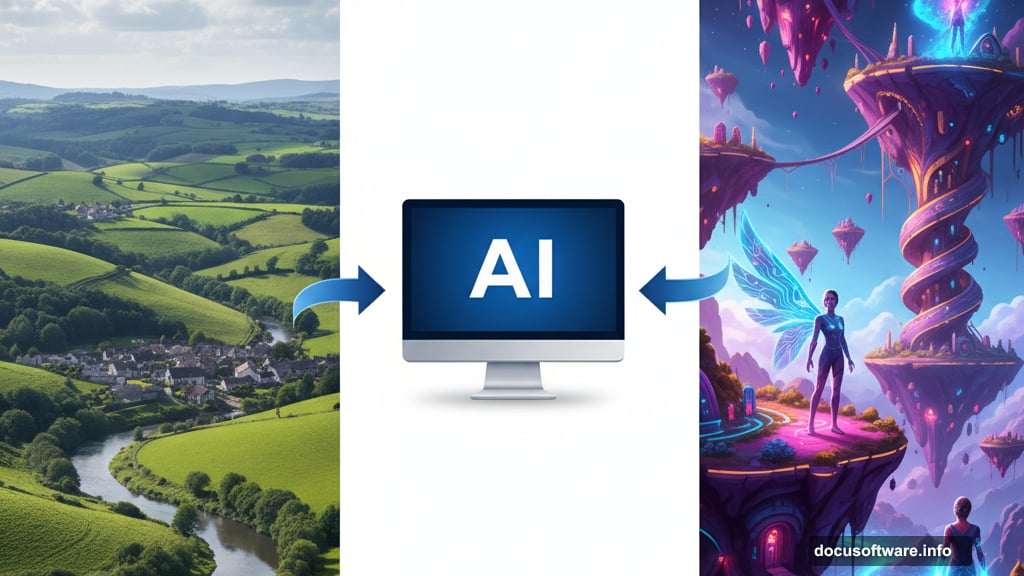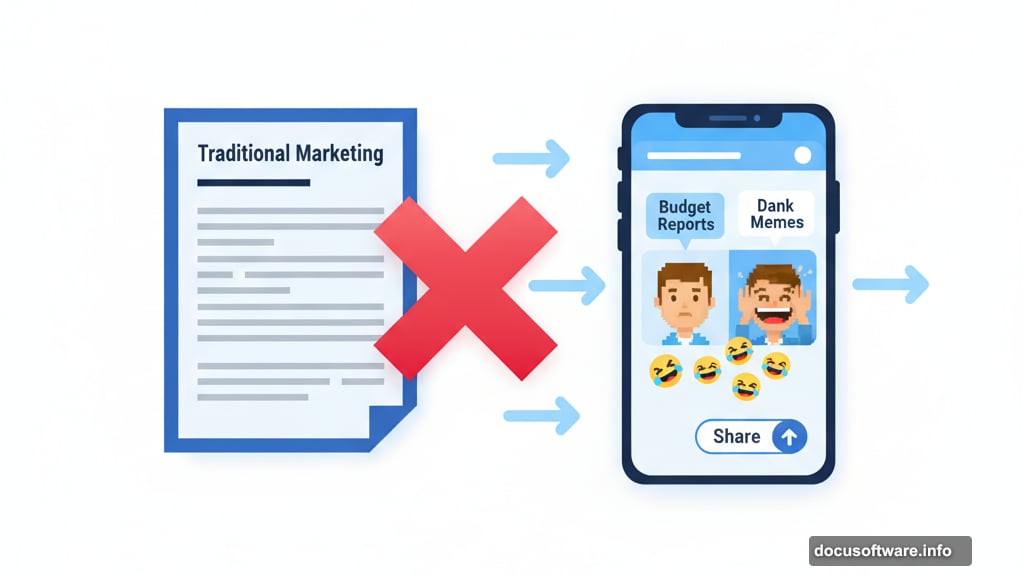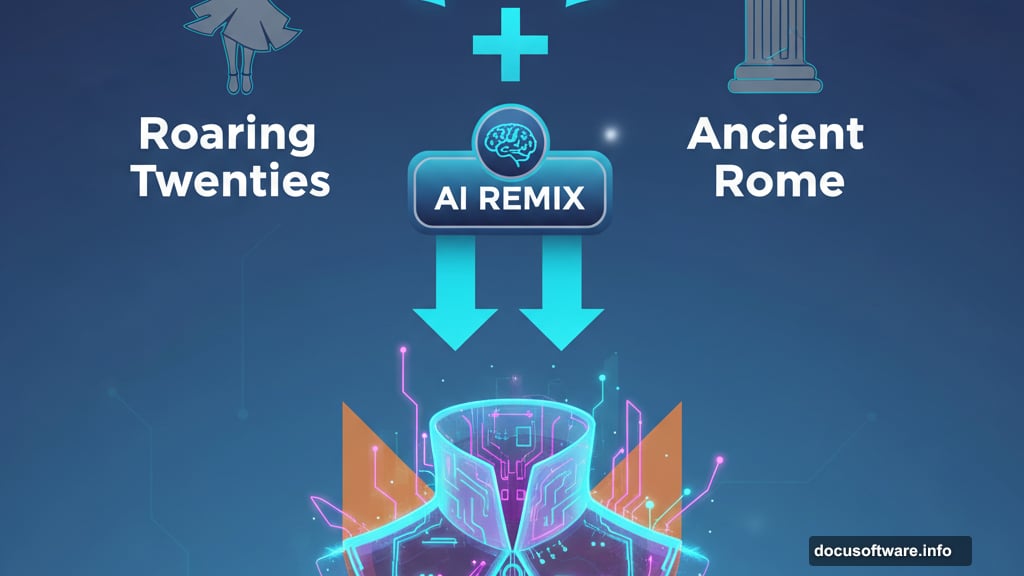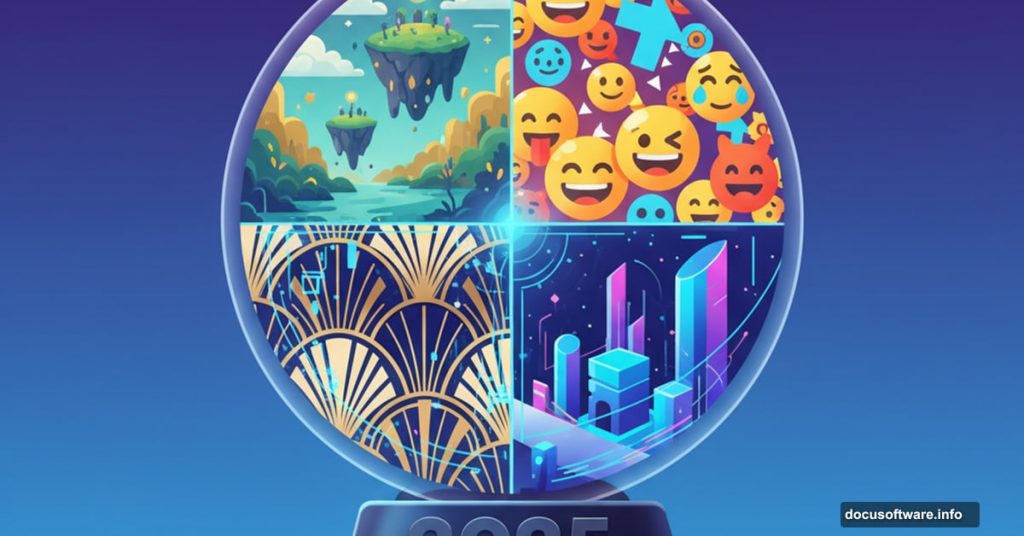Adobe just dropped their annual trend report. And for once, it’s not full of abstract nonsense.
The creative industry shifts constantly. But four distinct patterns emerged this year that go beyond typical design cycles. These trends reflect something deeper—our collective craving for escape, genuine emotion, and experiences that transcend screens.
Let’s break down what’s actually happening in creative work this year.
Fantastic Frontiers: Escapism Through Visual Magic
Reality feels heavy right now. So creators are building alternative worlds that offer something better.
This trend leverages AI and cutting-edge visual effects to craft surreal, dreamlike environments. Think landscapes that defy physics. Characters that blend human and fantastical elements. Worlds where imagination drives every creative decision.
But here’s what makes it different from generic fantasy work. Modern tools let creators blend cultural references with impossible visuals in ways that feel both fresh and familiar. Plus, audiences respond to this content viscerally. It offers temporary escape from an increasingly chaotic world.
The tech enables the vision. But the vision stems from very human needs—wonder, adventure, and the desire to believe in something magical.

Playfulness Wins: Why Humor Dominates Brand Strategy
Serious messaging stopped working. Brands finally figured that out.
Humor creates emotional bonds that traditional marketing can’t match. A well-timed joke or relatable meme does more than months of corporate speak. So smart brands embraced playfulness as strategy, not just tone.
This shift goes beyond adding funny content. It’s about recognizing that people trust brands that don’t take themselves too seriously. Humor shows self-awareness. It demonstrates understanding of audience perspective. And it makes messages actually shareable instead of ignorable.
Moreover, memes became legitimate communication tools. They deliver complex ideas through culturally understood formats. They spread organically. They generate engagement without paid promotion. That’s marketing gold.
The brands winning right now? They sound like friends texting, not corporations broadcasting.
Time Travel: Past Meets Future in Unexpected Ways
Nostalgia isn’t new. But how creators use it definitely is.

This trend mashes historical aesthetics with futuristic elements. Imagine Roaring Twenties fashion rendered with holographic materials. Ancient Roman architecture reimagined through digital art. 1970s color palettes applied to sci-fi concepts.
AI plays a huge role here. It lets creators remix eras that never overlapped. A designer can merge Victorian details with cyberpunk sensibilities. An artist can place historical figures in futuristic contexts. The combinations feel fresh because they couldn’t exist before these tools did.
Plus, this approach solves a creative problem. Pure futurism often feels cold and alienating. Pure nostalgia feels stale and backward-looking. But combining them creates something emotionally resonant yet visually novel.
People connect with familiar elements. Then they get surprised by unexpected twists. That tension drives engagement.
Immersive Allure: Beyond the Screen Finally
Screen fatigue is real. And creators found the antidote.
This trend prioritizes multisensory experiences over visual content alone. Art installations you walk through. Marketing activations that engage touch, smell, and sound. Environments designed for active participation rather than passive consumption.
Why now? Because audiences spent years staring at rectangles. They’re desperate for experiences that feel physical and memorable. A beautiful image gets scrolled past in seconds. But an immersive environment? That stays with people for years.
Smart brands invest in experiential marketing that creates Instagram-worthy moments while also delivering genuine sensory engagement. Museum exhibitions adopt interactive elements that transform observation into participation. Even digital-first companies build physical spaces where their brands come alive.

The goal isn’t abandoning digital. It’s recognizing that some experiences demand more than pixels can provide. And the most memorable creative work in 2025 will engage bodies, not just eyeballs.
What This Actually Means for Creators
These trends aren’t random. They respond to real audience needs that developed over recent years.
People want escape from difficult realities. They crave authentic emotional connections. They seek experiences that surprise and delight. And they’re tired of content that treats them like passive consumers rather than active participants.
So the creators who thrive this year? They’ll build fantastic worlds that offer respite. They’ll use humor to forge genuine bonds. They’ll remix time periods to create fresh aesthetics. And they’ll design experiences that demand participation.
Which trend speaks to your work? Pick one and push it further than feels comfortable. That’s where the interesting stuff happens.
The competitive advantage goes to creators who recognize these shifts early and execute them well. Not just following trends, but understanding why audiences respond to them. Then delivering something even better than expected.
Make 2025 the year your creative work actually stands out.
